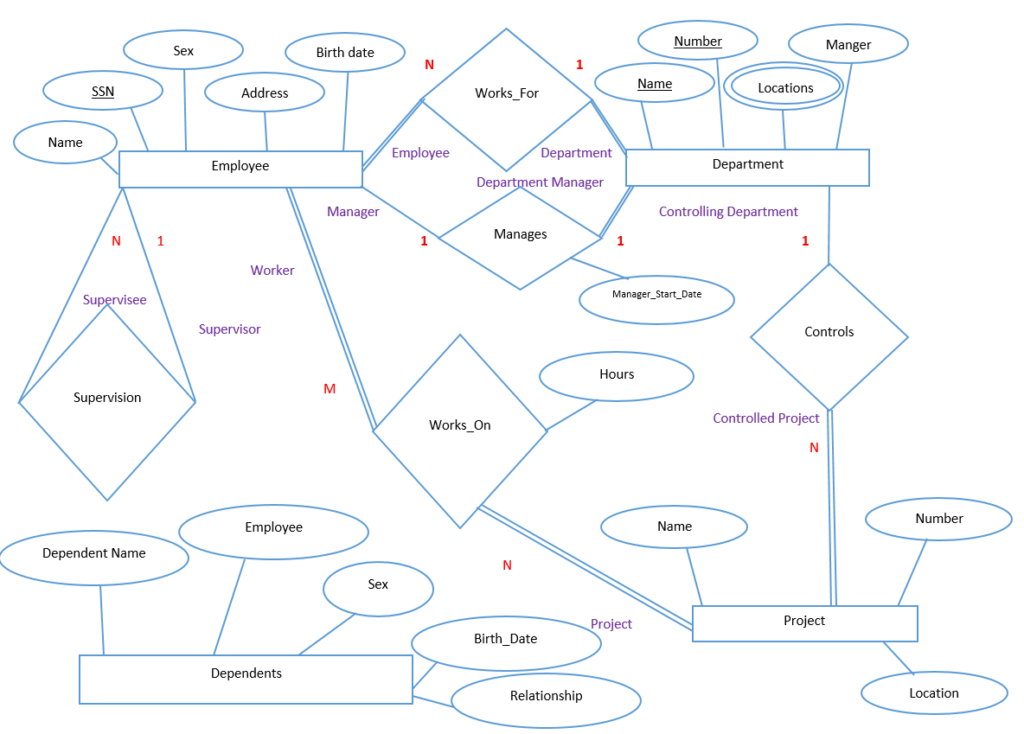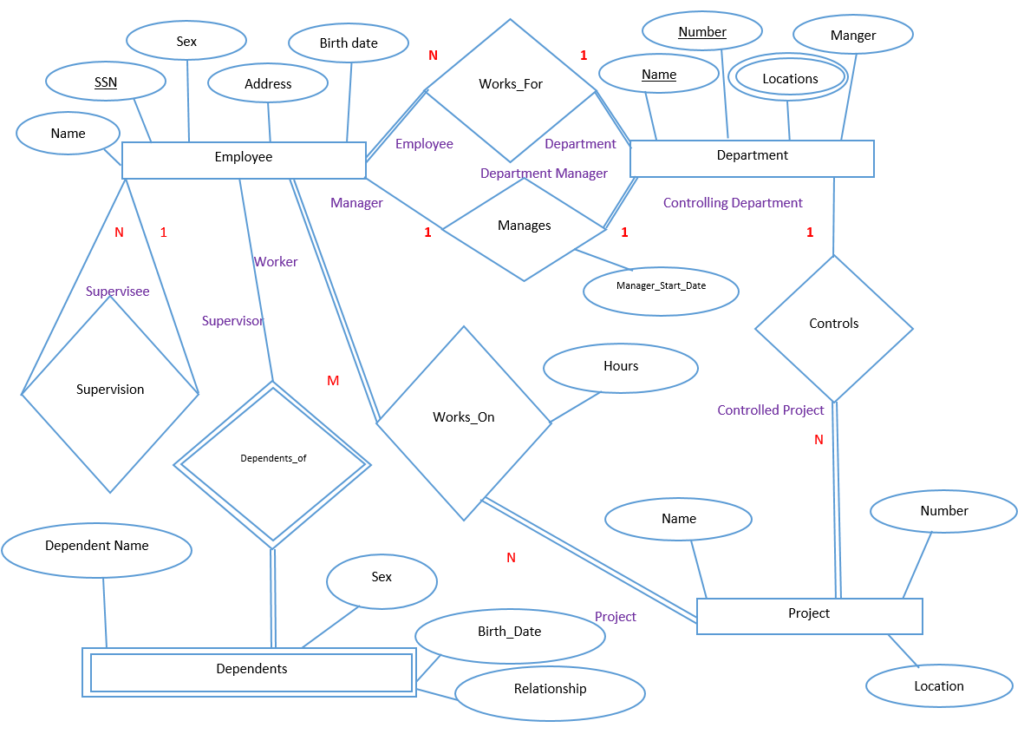Weak Entity Types
For Complete YouTube Video: Click Here
In this class, we will understand Weak Entity Types.
We have already discussed the concept of identifying relationship types.
So far, we have considered employee, department, and project entity types.
Here we will consider the dependents entity type, as shown below.

In the above image, the employee attribute of the dependents entity type is referencing an employee.
If an attribute of an entity type is referencing another attribute’s attributes, then there is a relationship.
The relationship is dependents_of.
We now convert the employee attribute to a relationship.
Table of Contents
Cardinality Ratio and Participation
Cardinality Ratio
The dependents have maximum participation of one because each dependent is related only to one employee.
The employees have maximum participation of N because an employee may have more than one dependent.
Participation
The participation of the employee is partial because an employee may not have dependents.
The participation of the dependents is ‘full’ because a dependent has an employee associated with them.
Without an employee, there is no ‘dependent.’
The ER-Diagram with the dependents is as shown below.

Weak Entity Types
Entity types that do not have ‘key attributes are weak.
If we consider the dependents entity type in the above ER-Diagram, none of the attributes is ‘key attributes.’
So, dependents are a weak entity type.
The relationships that get connected to the weak entity types are identifying types.
ER-Diagram Representation
The weak entities and the identifying relationships are represented in double rectangles and diamonds, as shown below.

